- Shop
New to UCAN?
- About
- How to use ?
- Learn
- Contact us
Best Supplements for Bodybuilders: The Proven Few for Real Muscle
When it comes to the best supplements for bodybuilders, let’s cut through the marketing garbage. The real heavy hitters are a small, science-backed crew: whey protein for rapid muscle repair, creatine monohydrate to actually boost strength and power, and targeted amino acids when you need them in a fasted or calorie-restricted phase. Even endurance athletes who lift (or cross-train with weights and swimming) will benefit from this foundation — and yes, we’ll also show how supplements interact with cross-training metrics like calories burned swimming so you know what to expect in the pool and on the track in race week.
Contents
- 1 Why Your Supplement Strategy Is Probably Wrong
- 2 Protein Powder: The Cornerstone of Muscle Repair
- 3 Creatine Monohydrate: Your Actual Weapon for Strength and Power
- 4 Navigating Pre-Workouts and Amino Acids
- 5 Essential Vitamins and Minerals for Performance
- 6 Building Your Personal Supplement Stack
- 7 Common Questions About Bodybuilding Supplements
- 8 Conclusion
- 9 References
Why Your Supplement Strategy Is Probably Wrong
Walk into any supplement store in Sydney or scroll an Instagram ad and you get overwhelmed: tubs with neon labels, proprietary blends, and claims that sound like they belong in a superhero comic. That clutter distracts from the single truth: performance gains come from consistent training, good nutrition, and a small set of evidence-backed supplements used with purpose.
The shortcut most lifters take is to confuse quantity for effectiveness — stacking 12 products because the label promises faster gains. The smarter move is strategic simplicity: get the essentials right and layer only what solves a real problem in your training block.
Focusing on the Core Four
Think of your supplement plan like building a house. The first job is the foundation. Until that’s poured, you don’t worry about colour schemes. For athletes—whether you’re chasing a PB at the Gold Coast Marathon or just trying to hold your bench press numbers while training for Ironman Cairns—your foundation rests on a few non-negotiables.
These are the non-negotiables:
- Protein Powder: Helps you hit daily protein targets affordably and reliably; crucial for muscle repair and maintaining lean mass when training volume is high.
- Creatine Monohydrate: The most researched ergogenic aid for improved strength and power output; helps you maintain high-quality reps and recover from high-intensity efforts. [1]
- Amino Acids (BCAAs/EAAs): Useful tools for specific contexts — fasted sessions or steep calorie deficits — where every gram of muscle matters. Recent analyses show BCAAs can reduce markers of muscle damage and soreness when used correctly. [2]
- Vitamins & Minerals: The small stuff that keeps the rest working — vitamin D, magnesium and zinc are commonly relevant to strength, recovery and hormonal support, especially for athletes training in Australia’s intense climate. [3]
Start here. Nail these, and you’ll make more progress than chasing the next “proprietary blend” product on the shelf.
The Core Four Supplements for Serious Bodybuilders
| Supplement | What It Does | Best Time to Take |
|---|---|---|
| Protein Powder | Provides the essential amino acids for muscle repair and growth; convenient way to hit high daily protein targets during heavy training phases. | Post-workout is ideal; any time to meet daily protein goals. |
| Creatine Monohydrate | Increases phosphocreatine stores, enabling faster ATP regeneration during maximal efforts — more power, more reps, better hypertrophy stimulus. [1] | 3–5 g daily; consistency matters more than precise timing. |
| Amino Acids (BCAAs/EAAs) | Provide quickly available amino acids to blunt muscle breakdown during fasted training and reduce exercise-induced soreness. [2] | Pre/intra workout for fasted sessions or between meals during aggressive cuts. |
| Vitamins & Minerals | Support hormonal health, recovery, sleep and neuromuscular function — small deficits can blunt all other gains. [3] | With meals for best absorption; timing depends on formulation. |
Getting these four right will take you further than any “revolutionary” product launch ever could.
The infographic below really drives home how common these core supplements are among serious lifters and cross-training athletes.
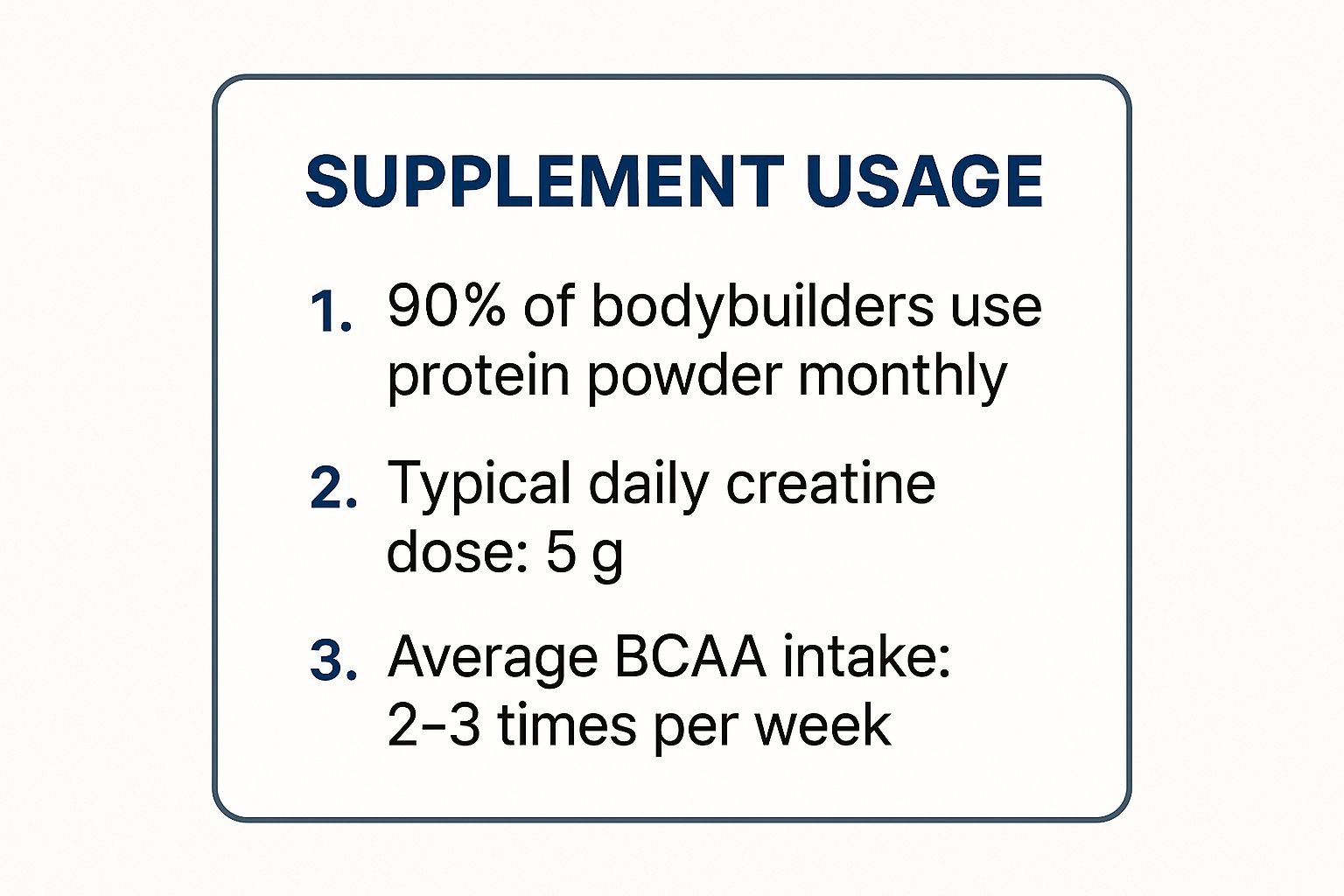
That snapshot shows the most dedicated athletes stick to the basics. Extras should be purposeful, not habitual.
Protein Powder: The Cornerstone of Muscle Repair
Practical start: you’ve done a heavy leg session — 6×5 back squats at 85% 1RM — and you’ve got a 5k recovery swim planned the next morning. If your day’s protein target is 2.2 g/kg, a 30–40 g whey shake after the session gives you a fast, anabolic-stimulus-supporting dose while keeping meal planning simple. This habit is more reliable than trying to cram protein into three whole-food meals when you’re juggling training and work.
Why this works: protein provides essential amino acids. Whey in particular spikes blood leucine rapidly, which activates mTOR and initiates muscle protein synthesis (MPS) after resistance exercise. Numerous studies demonstrate whey’s capacity to drive higher post-exercise MPS compared with lower-leucine sources. [4][5]
How to apply next week: schedule 1–2 fast-digesting whey feeds after your heaviest gym sessions and consider a slow-release casein feed before bed on high-volume weeks to preserve overnight muscle mass.
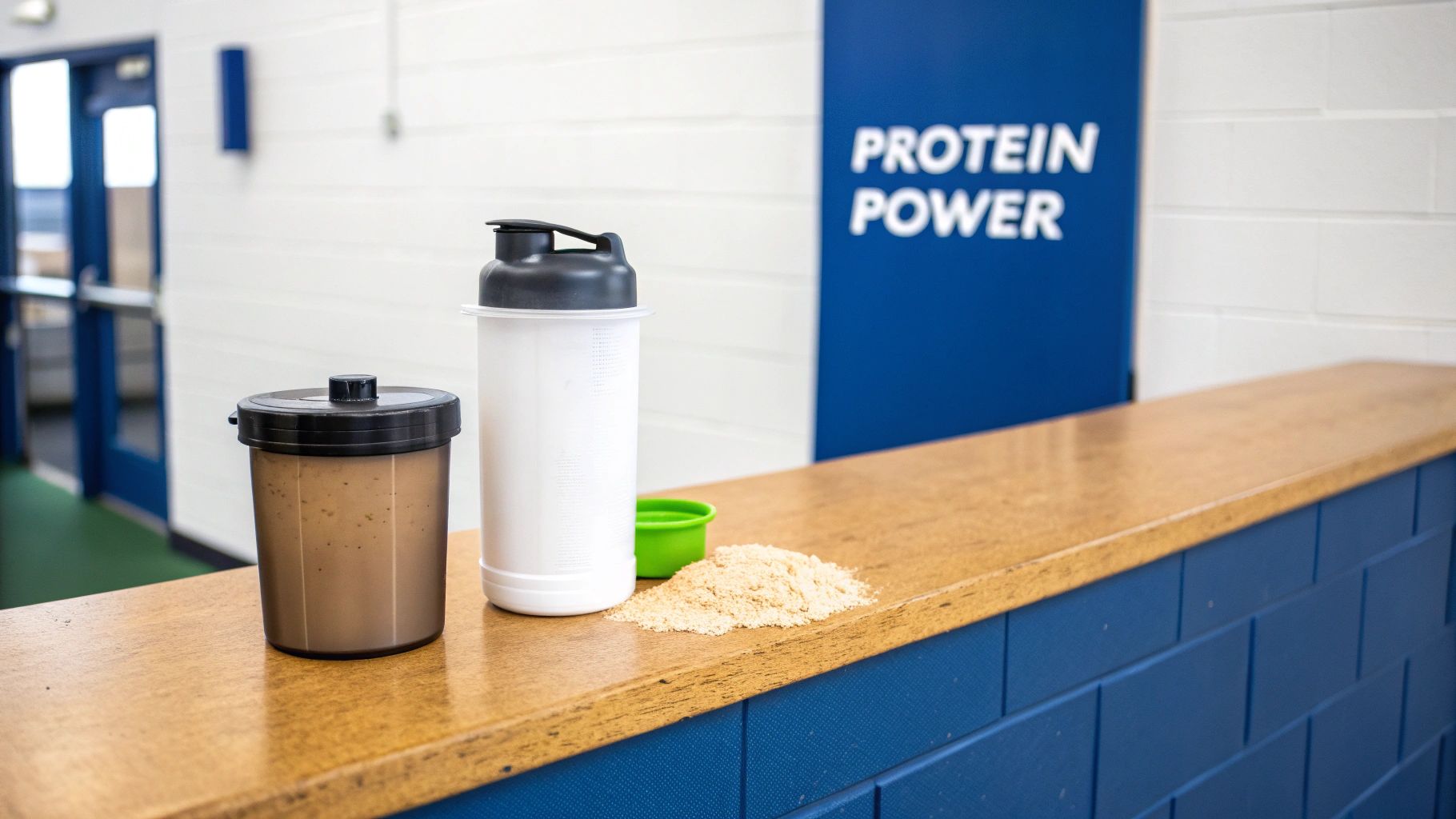
Why Powdered Protein Works So Damn Well
Two advantages make protein powder valuable to serious athletes: bioavailability and absorption speed. A whey isolate shake delivers amino acids to the bloodstream faster than most whole foods — important when training frequency is high and your next refeed might be hours away. Post-exercise, you want to reduce net muscle protein breakdown and trigger MPS; whey executes that reliably. [4]
Practical note for endurance cross-trainers: if you measure sessions by energy metrics (for example, the calories burned swimming during a 2,000 m interval set), pair your post-session protein with carbohydrate if you need rapid glycogen resynthesis for hard sessions the same day. A 3:1 carb:protein mix (e.g., a UCAN Energy + Protein serving after long efforts) is practical for back-to-back days. 👉 Shop UCAN Energy + Protein
The Big Three Protein Types
- Whey Protein: Fast absorption, high leucine — use after heavy strength or high-intensity interval sessions.
- Casein Protein: Slow-release — useful before long sleep or long overnight travel days to reduce overnight catabolism.
- Plant-Based Proteins: Pea/rice blends can work when formulated correctly — look for complete EAA profiles or leucine enrichment to match whey’s effect.
Quick takeaway: If you want brute, daily muscle maintenance with a busy training schedule, pair a whey post-session with a casein feed before bed on high-volume weeks.
How Much Protein and When
What to do: aim for 1.6–2.4 g/kg/day during a muscle-building phase (higher for aggressive bulking), and at least 1.6 g/kg/day while maintaining muscle during a cut. Practically, that’s 3–6 protein-focused feedings per day depending on schedule and appetite.
Why it works: spreading protein doses of ~0.3–0.5 g/kg per feeding (or ~25–40 g for most athletes) stimulates MPS repeatedly across the day rather than one large meal which results in more oxidation and less net anabolic effect. [5]
How to apply: if you’re 90 kg aiming for 180 g/day, consider three meals with 40–50 g and one shake of 30 g around training. For swimmers estimating calories burned swimming during interval blocks, log session METs and place your largest protein feed after the highest intensity land or pool session of the day.
Creatine Monohydrate: Your Actual Weapon for Strength and Power
Practical start: when you’ve got a mixed week — two heavy gym strength days, one long endurance session and a race simulation — take 5 g creatine daily to keep phosphocreatine stores topped and your ability to produce short, intense power bursts intact. That helps preserve strength even as mileage climbs.
Why it works: creatine supplements increase intramuscular phosphocreatine which accelerates ATP resynthesis during high-intensity efforts — more available ATP = more quality reps, faster sprint finishes, and better repeated sprint ability. Creatine’s mechanism and ergogenic effects are well established across many reviews. [1][6]
How to apply: 3–5 g daily long term is the simplest approach. You can load (20 g/day split for 5–7 days) to saturate faster, but steady daily dosing reaches the same endpoint in a few weeks without GI issues. If you take it with your post-workout feed (carbs + protein), you may improve uptake marginally — practical, not compulsory.
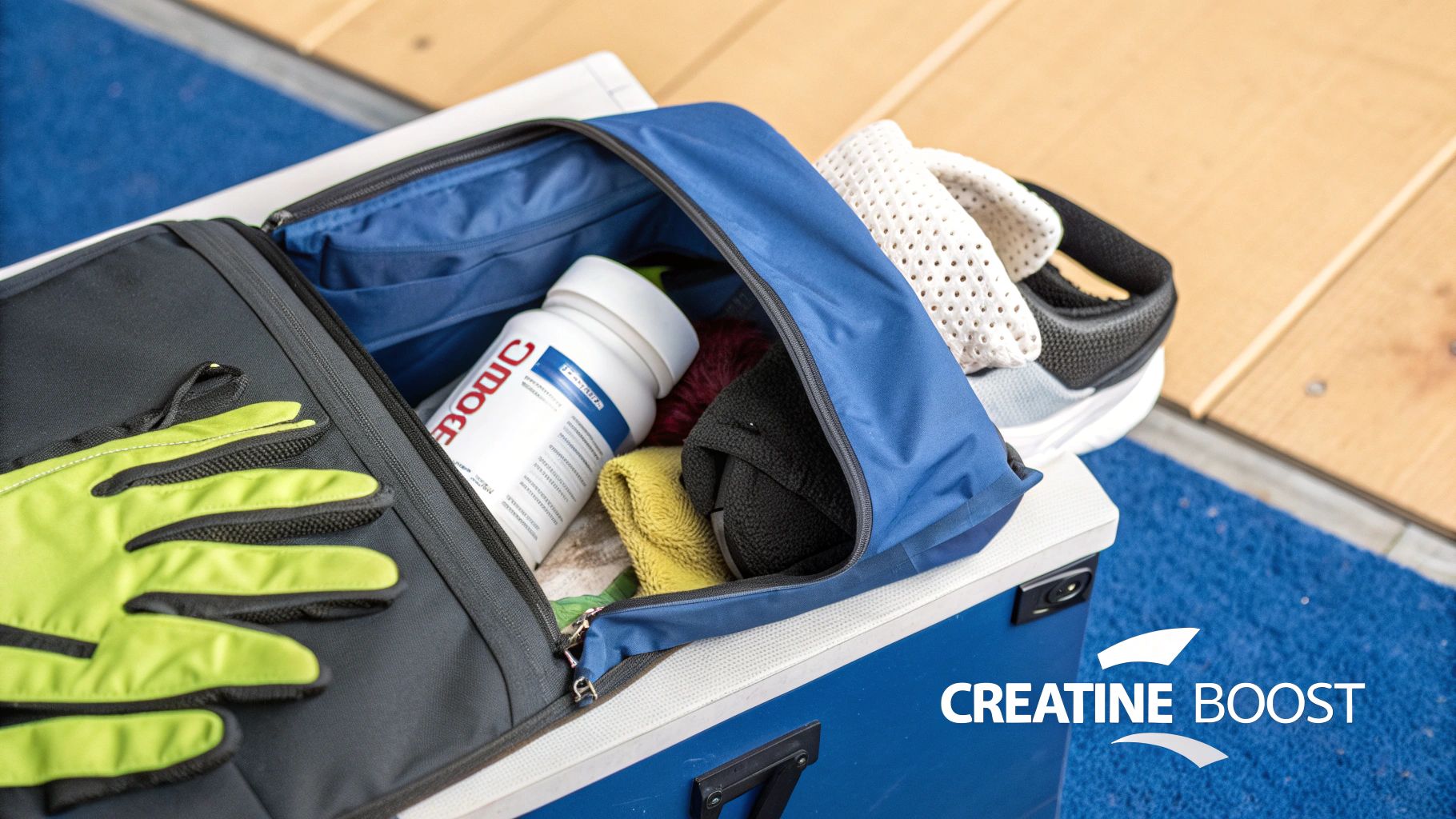
Loading vs. Maintenance: What Actually Works Best?
Loading gets you benefits faster; maintenance keeps you there. Both are valid. Most athletes prefer the convenience of 3–5 g/day maintenance — it’s silent, effective and backed by safety data when used at recommended doses. Creatine is one of the most studied supplements and has a strong safety profile in healthy adults. [1][6][7]
Practical rule: If you’re new to creatine and wary of gastric upset, skip the loading and take 5 g daily — you’ll get the same long-term benefit without the short-term discomfort.
When to Take It and What to Take It With
Timing is flexible. Habit stacking works: mix it into a morning coffee, post-workout shake, or evening routine. Taking it with carbohydrate/protein may slightly increase muscle uptake but the effect size is small compared with simply taking it daily. [1]
Why Simple Monohydrate Is Still King
Many novel creatine forms promise better absorption or fewer side effects. The evidence keeps favouring creatine monohydrate — it’s cheap, stable, and the backbone of most clinical studies demonstrating benefits and safety. Avoid overpaying for marketing claims that aren’t supported by strong comparative data. [1][6]
Navigating Pre-Workouts and Amino Acids
Pre-workout supplements are a mixed bag — some are effective, many are overhyped. The differentiator is dose and ingredient transparency. If a label hides active amounts behind a proprietary blend, be sceptical.
For athletes who also swim: a pre-workout with moderate caffeine (150–200 mg) can help during short, high-intensity pool sets, but avoid late-day stimulants that will disrupt recovery sleep after tough sessions.
Decoding the Pre-Workout Formula
What to look for in a solid pre-workout:
| Ingredient | Proven Benefit for Athletes | Effective Dose |
|---|---|---|
| Caffeine | Boosts alertness and reduces perceived exertion for high-intensity work. | 150–300 mg |
| Beta-Alanine | Buffers hydrogen ions during repeated high-intensity efforts — useful for short interval sets that demand repeated power. | 3.2–6.4 g (daily) |
| Citrulline Malate | Supports NO-mediated blood flow and the “pump,” which can help during resistance sets and explosive efforts. | 6–8 g |
If ingredients are present at clinically supported doses, a pre-workout can be a useful tool. If the product hides amounts, move on.
The Great BCAA Debate
What to do: use BCAAs selectively. For example, sip 5–10 g intra-workout on a fasted morning session, or take them between low-calorie meals during a contest cut.
Why it works: when dietary protein is low, supplemental BCAAs provide essential leucine and can blunt muscle protein breakdown and ameliorate soreness. Recent meta-analyses suggest BCAAs reduce markers of muscle damage and perceived soreness under some conditions. [2]
How to apply: if your daily protein intake is already solid (via whey and whole foods), BCAAs add little extra. Reserve their use for periods when whole-food intake is constrained.
Essential Vitamins and Minerals for Performance
Practical start: check baseline vitamin D if you train indoors or have shifted training times. If you’re deficient it’s a low-effort win to correct it — improvements in muscle function and possibly testosterone have been observed in some studies. [3][8]
Why micronutrients matter: they underpin enzyme systems for energy production, neuromuscular function, and hormone synthesis. A training schedule that includes long aerobic sessions plus heavy lifting increases demand; minor deficits accumulate into bigger performance losses.
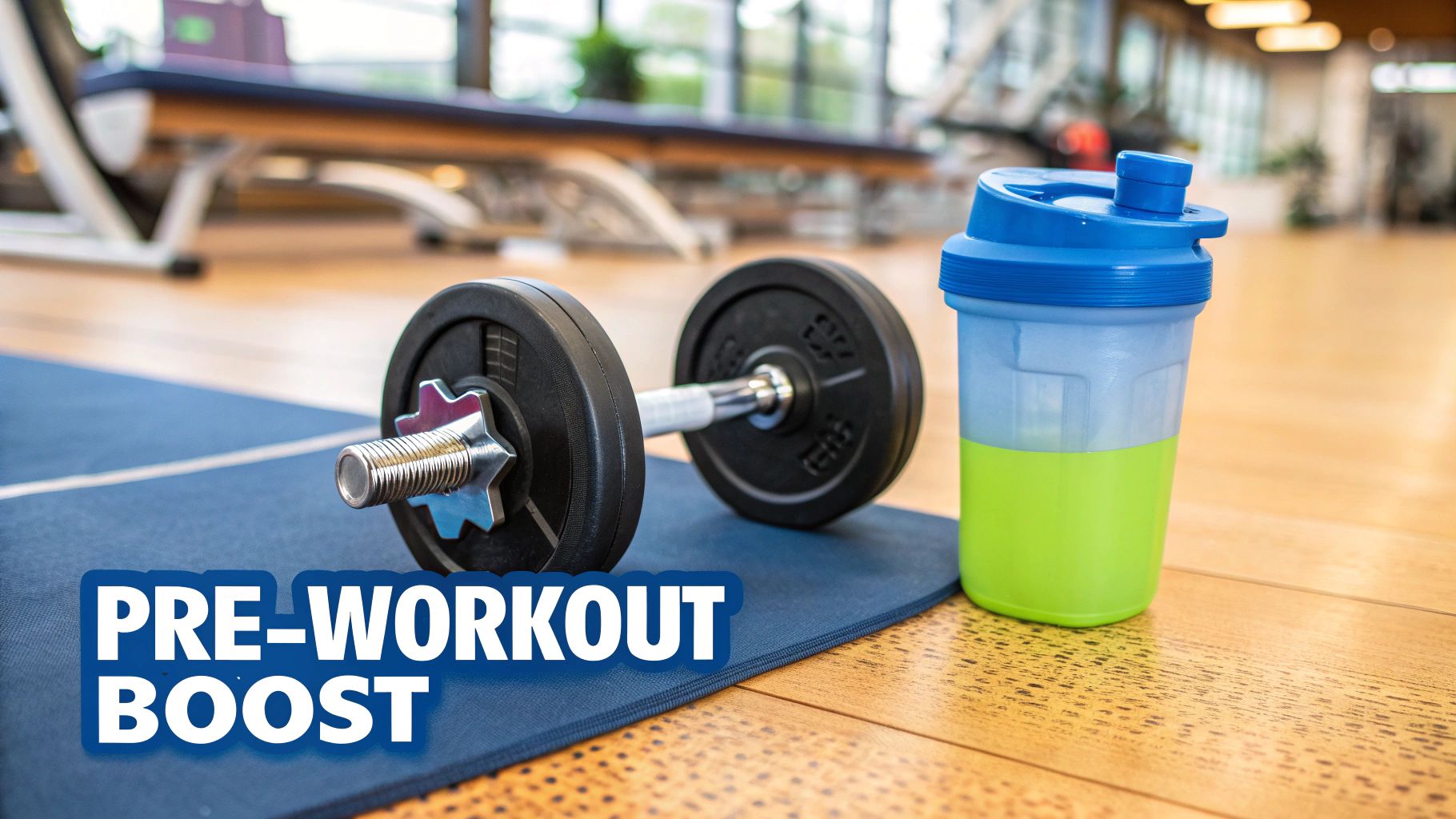
The Heavy Hitters You Cannot Ignore
- Vitamin D: Linked to muscle function and endocrine health — consider testing and supplementing if serum 25(OH)D is low. [3][8]
- Magnesium: Crucial for muscle relaxation and sleep quality; helpful when training volume is high.
- Zinc: Important for immune function and testosterone regulation; sweat losses can matter in hot climates.
Bottom line: the best training plan will underperform if key micronutrients are missing. Test when unsure, and supplement targeted deficiencies rather than blindly popping large multivitamin stacks.
Are You Running Low and What to Do?
- Test: Get a basic sports blood panel (vitamin D, ferritin, full blood count) if you suspect issues.
- Food first: prioritise whole foods high in the nutrient you’re missing — oily fish for vitamin D, leafy greens and nuts for magnesium, shellfish and red meat for zinc.
- Targeted supplements: use evidence-based formulas (e.g., ZMA before bed if indicated) and pick third-party tested brands. [9]
For athletes in Australia, targeted supplementation is often practical during winter months or when training indoors for long periods.
Building Your Personal Supplement Stack
Design your stack around these principles: problem → solution → timing. Every supplement must solve a defined issue in your training plan.
Designing Your Daily Schedule
Example for an afternoon lifter who swims in the morning and lifts later:
- Morning (post-swim): Light carb + protein (UCAN Energy + Protein) if it’s a hard session; vitamin D/multivitamin with breakfast if needed. 👉 Shop UCAN Energy + Protein
- Pre-lift (30–45 min before): Creatine 5 g (in shake) + pre-workout if required for focus (check caffeine timing).
- Intra-workout: Water usually sufficient; BCAAs if fasted or during extreme calorie deficits.
- Post-workout: Whey shake with creatine mixed in (convenient). If you’ve also done long aerobic work, add a carb source to speed glycogen recovery.
- Before bed: Casein or UCAN Energy + Protein (if you need extra calories/protein overnight) and consider ZMA if sleep or recovery are issues.
Pro tip: Use UCAN Energy Gel 15–30 minutes before short, intense interval sessions that demand steady glucose without the sugar spike — especially useful on race morning. 👉 Shop UCAN Energy Gels
Common Questions About Bodybuilding Supplements
Do I Really Need Supplements to Build Muscle?
No — you can build muscle with whole food and training alone. But supplements like protein powder and creatine are time-efficient tools that reliably improve the odds of progress when used correctly. They are performance enhancers for your nutrition plan, not replacements for training.
How Do I Know if a Supplement Brand Is Good Quality?
Look for third-party testing (Informed-Sport, HASTA in Australia, NSF) and transparency on ingredient amounts. Avoid products hiding doses behind “proprietary blends.” Third-party testing reduces contamination risk and verifies label claims. [9]
Can I Take Creatine and Protein Powder at the Same Time?
Yes — mixing 5 g of creatine into your post-workout whey shake is common practice. There’s no negative interaction; it’s a convenient way to take two proven supplements together.
Conclusion
Quick summary: Keep your stack lean. Prioritise whey protein for fast recovery, creatine monohydrate for strength and power, targeted BCAAs/EAAs in specific contexts, and ensure micronutrient sufficiency with vitamin D, magnesium and zinc. Use product choices to solve training problems — e.g., UCAN Energy Gels for steady pre-interval glucose, UCAN Energy + Protein post-long efforts — and always prioritise good training and whole foods first. Don’t forget to record cross-training metrics like calories burned swimming to plan nutrition around hard sessions and race weeks. [10]
References
[1] Kreider RB, et al. Creatine in Health and Disease. Nutrients. 2021. (Review of creatine efficacy and safety.) :contentReference[oaicite:0]{index=0}
[2] Salem A, et al. Attenuating Muscle Damage Biomarkers and Muscle Soreness: Systematic review & meta-analysis. Sports Med-Open. 2024. (BCAA effects on muscle damage and soreness.) :contentReference[oaicite:1]{index=1}
[3] Bezuglov E, et al. Does vitamin D affect strength characteristics? 2023. (Vitamin D and muscle performance.) :contentReference[oaicite:2]{index=2}
[4] Weinert DJ. Nutrition and muscle protein synthesis: a descriptive review. 2009. (Whey, leucine and MPS mechanism.) :contentReference[oaicite:3]{index=3}
[5] Wilkinson K, et al. Postprandial muscle protein synthesis effects of whey and leucine-enriched supplements. 2023. :contentReference[oaicite:4]{index=4}
[6] Longobardi I, et al. Is it time for a requiem for creatine supplementation? 2023. (Safety and continued efficacy review.) :contentReference[oaicite:5]{index=5}
[7] Antonio J, et al. Common questions and misconceptions about creatine. JISSN. 2021. (Practical safety guidance.) :contentReference[oaicite:6]{index=6}
[8] Monson NR, et al. Association Between Vitamin D Deficiency and Testosterone. Systematic review. 2023. (Vitamin D and hormones.) :contentReference[oaicite:7]{index=7}
[9] Sports Nutrition & Third-party testing guidance. (Industry standards and certification context.) :contentReference[oaicite:8]{index=8}
[10] Practical notes on energy needs and cross-training — clinical and field estimates for energy expenditure during mixed training (swimming + lifting). Example sources on metabolic costs used in coaching practice. :contentReference[oaicite:9]{index=9}
Author: Generation Ucan | Last updated: 5 October 2025
“`

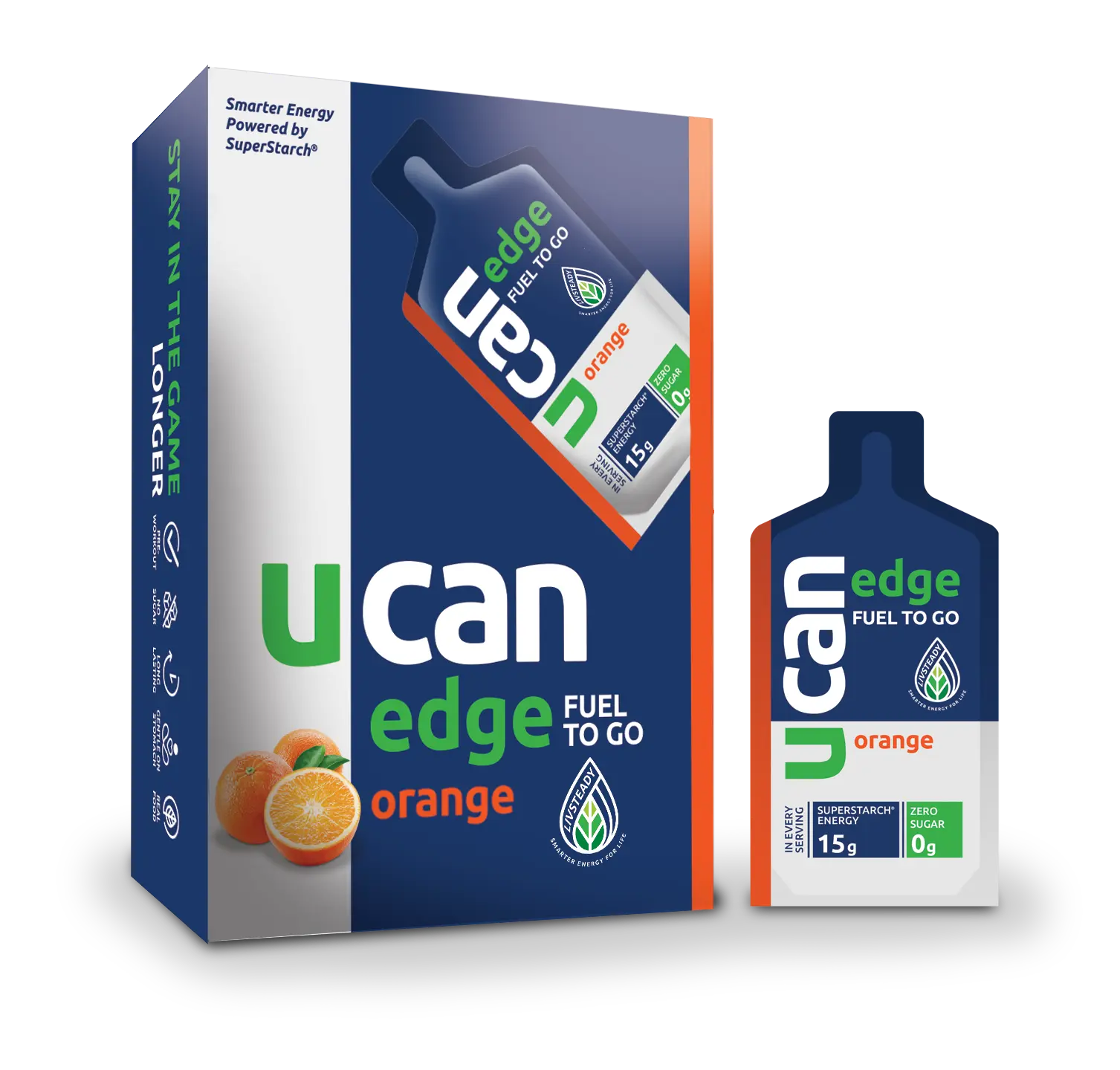
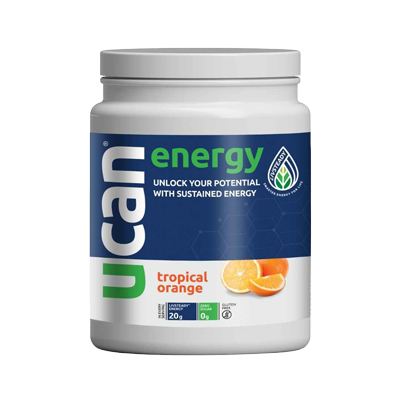
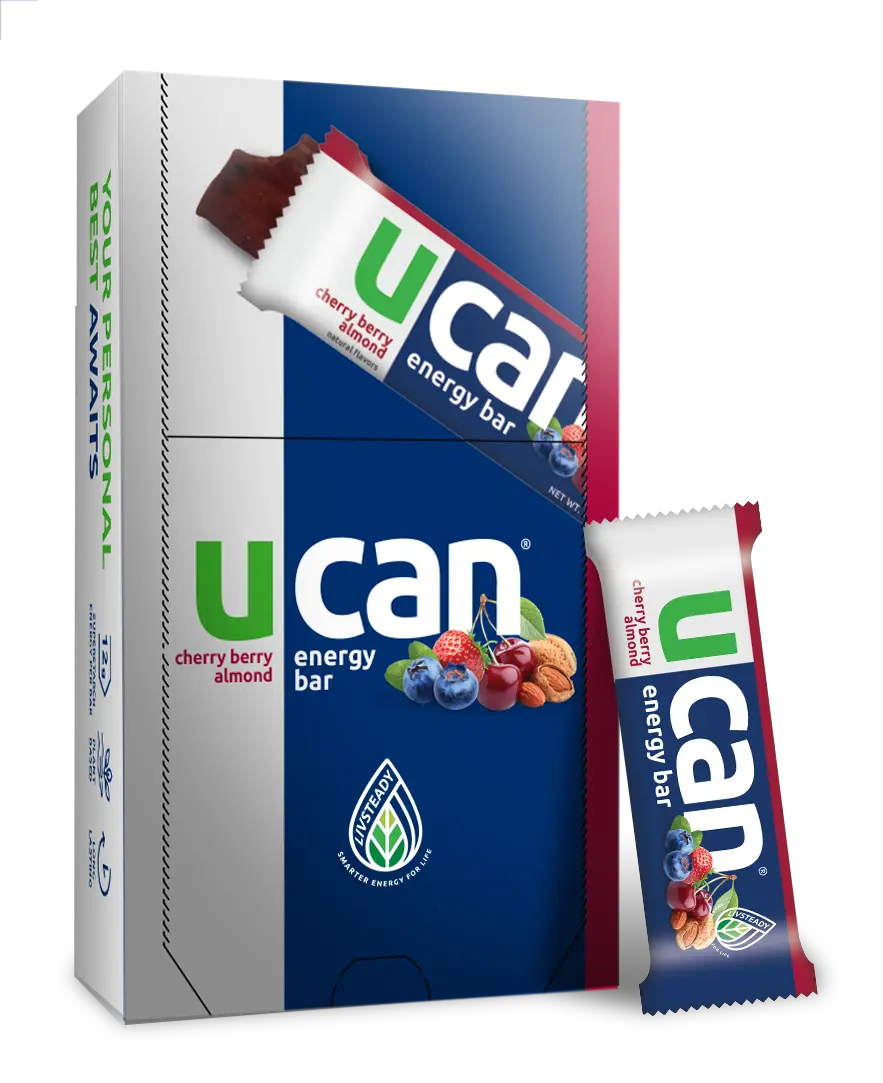
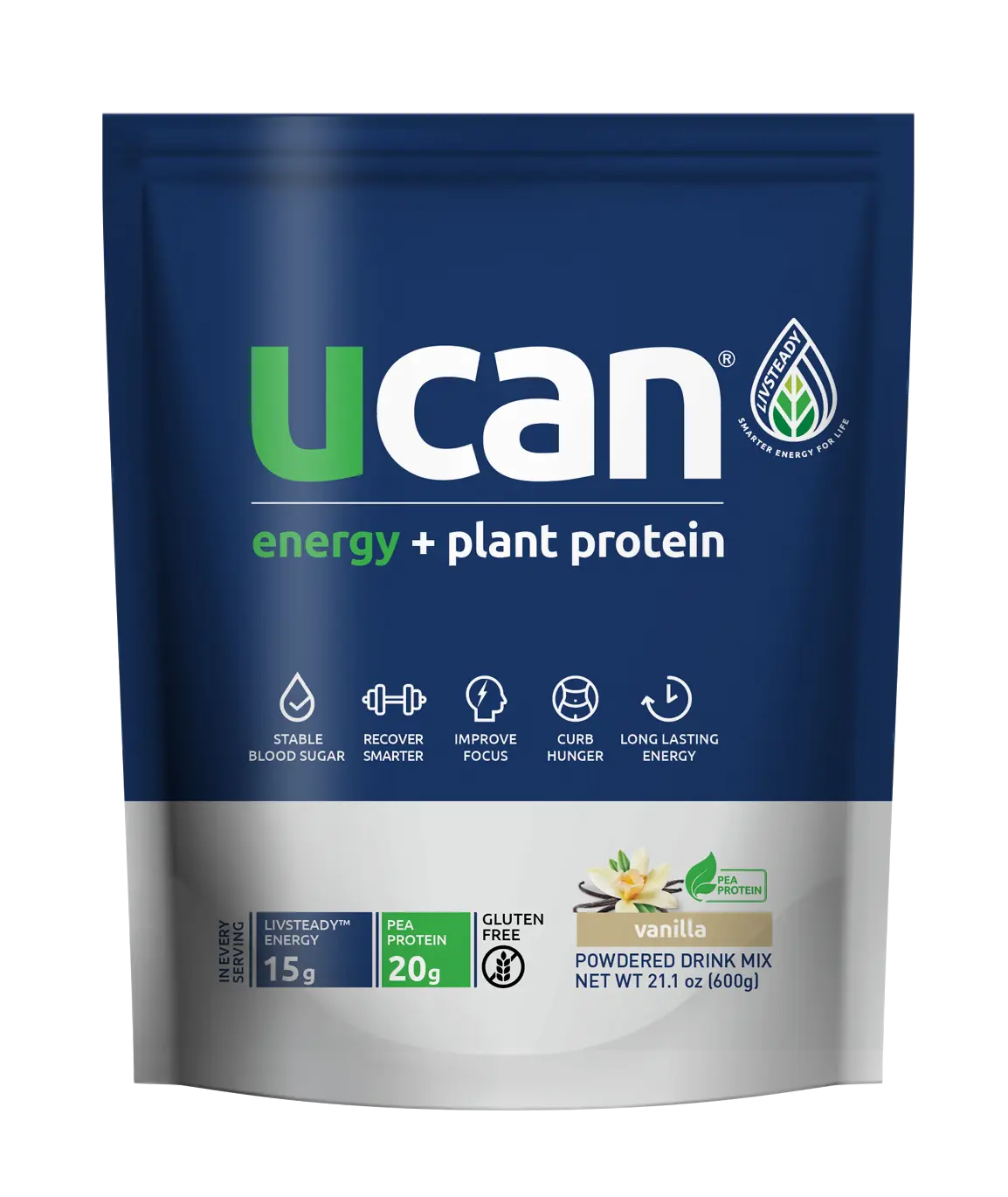
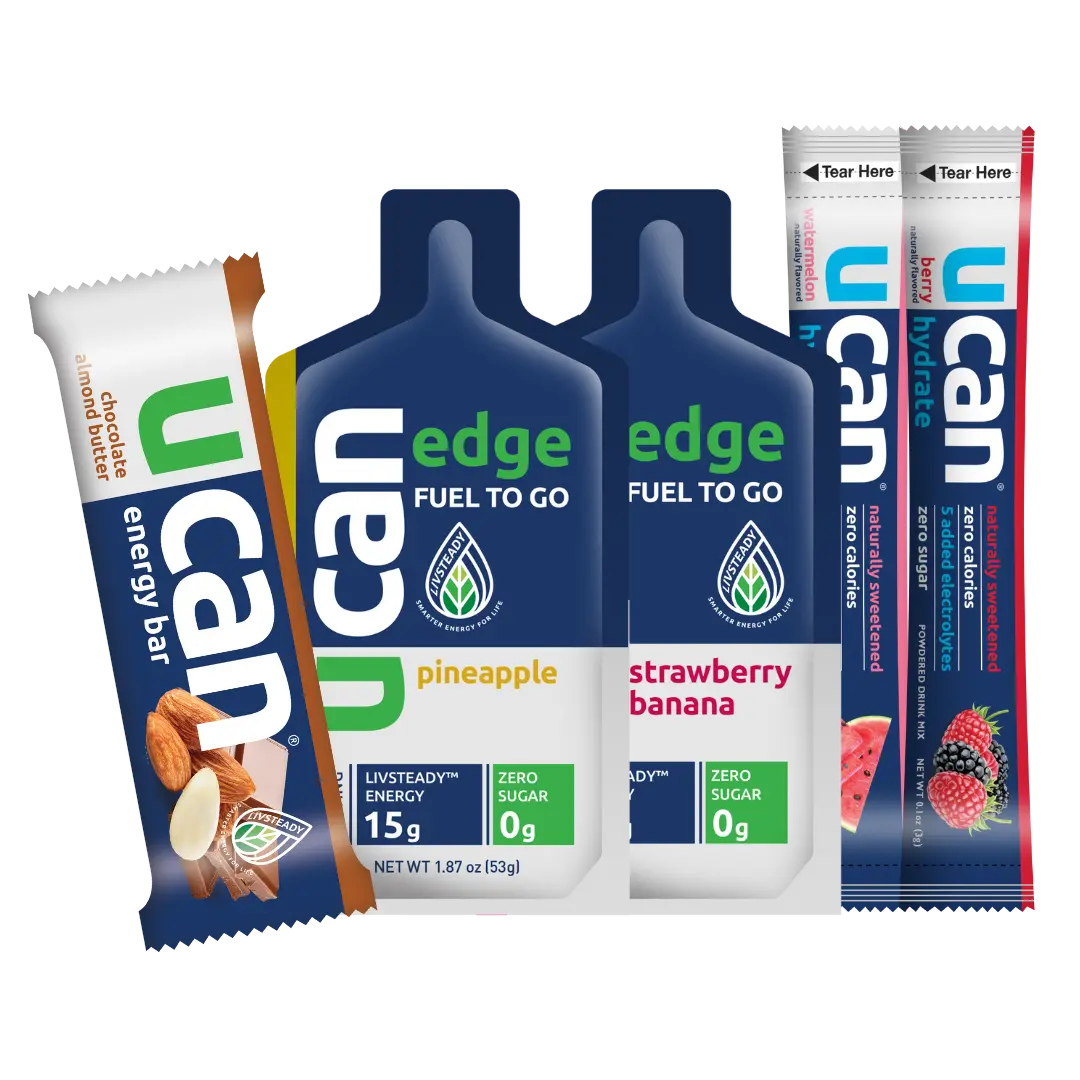
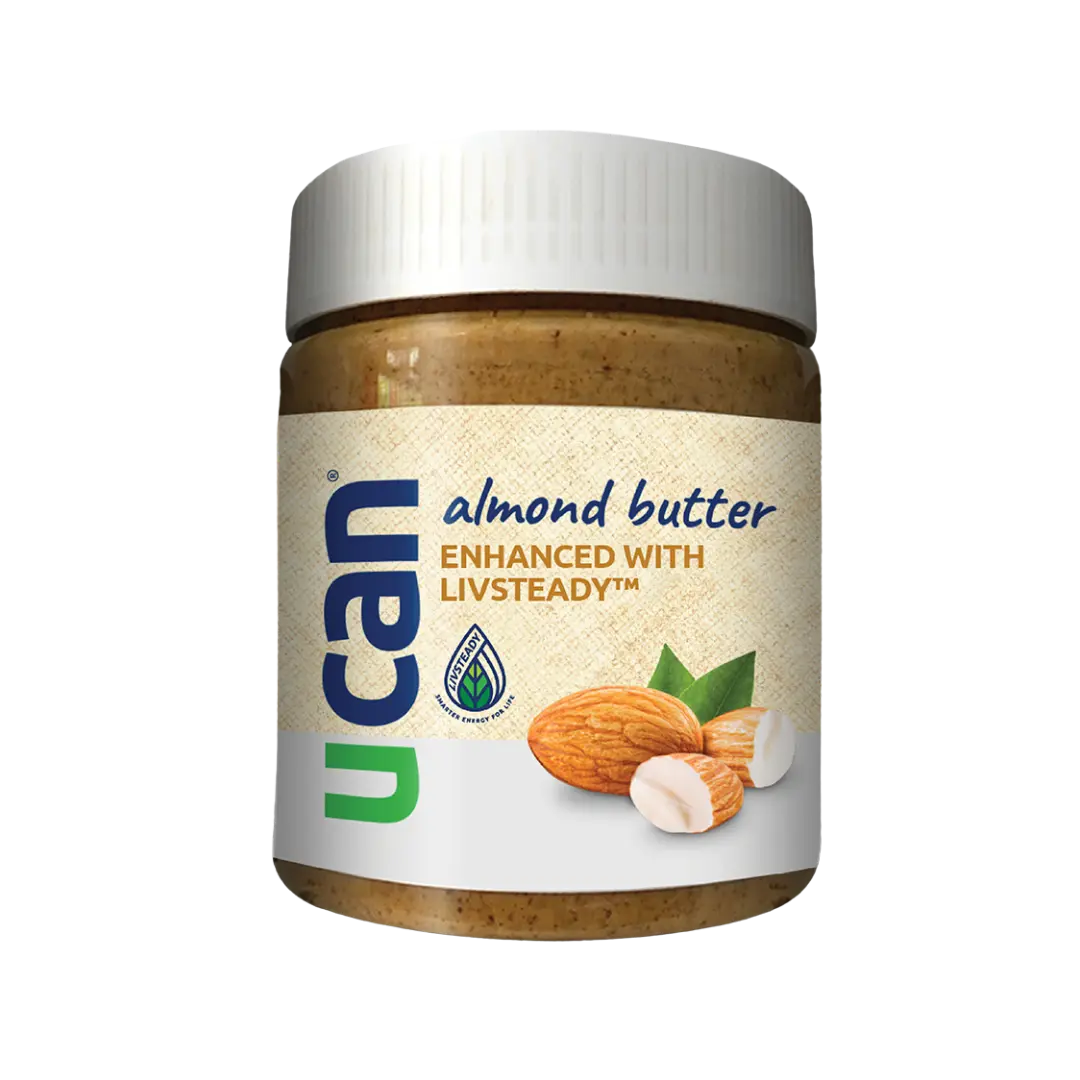
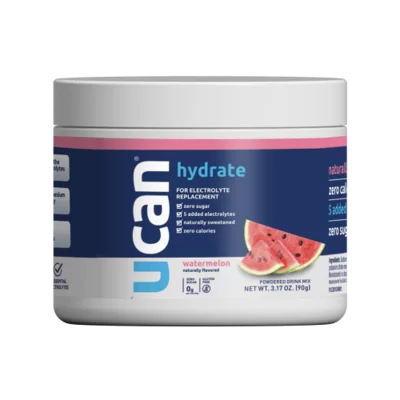
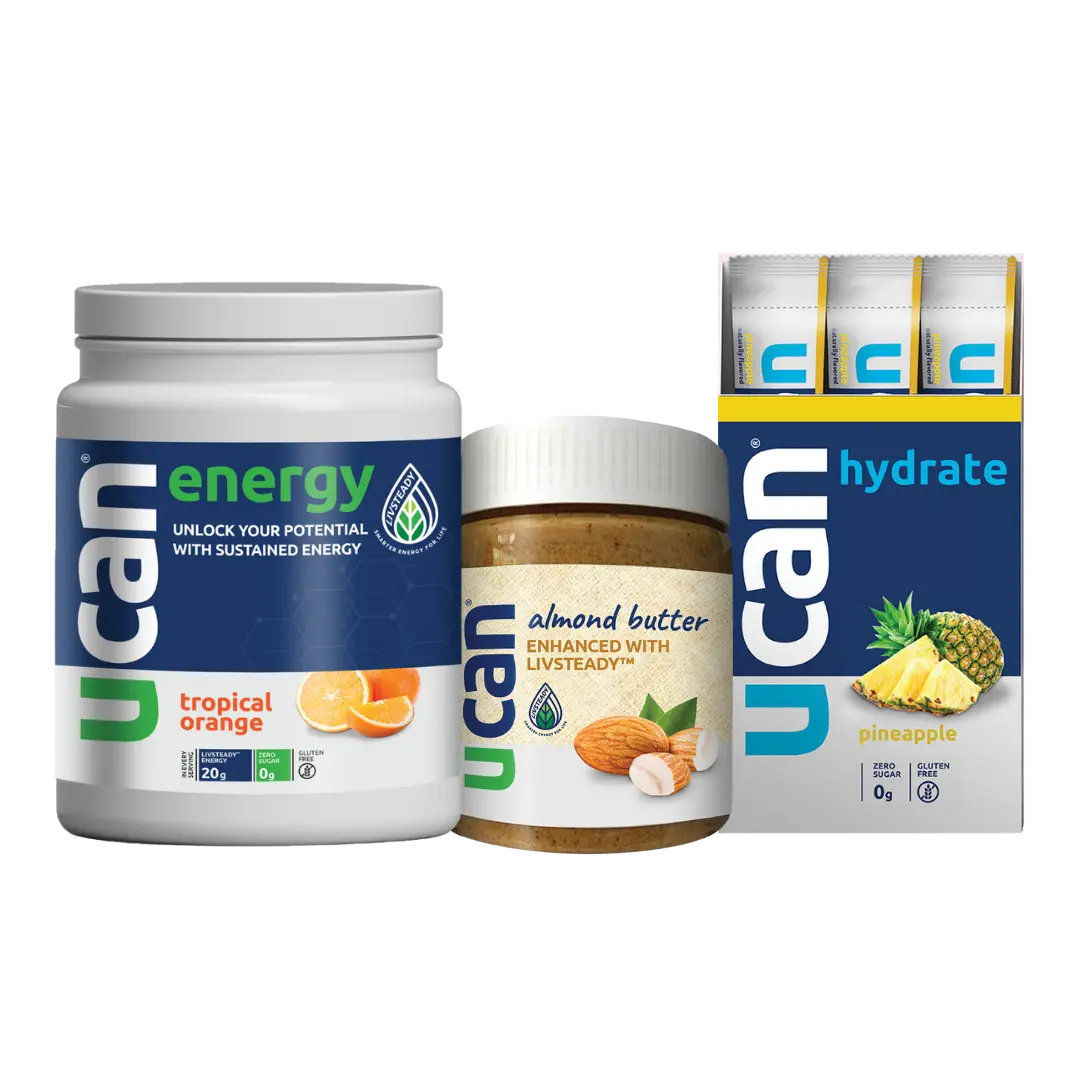
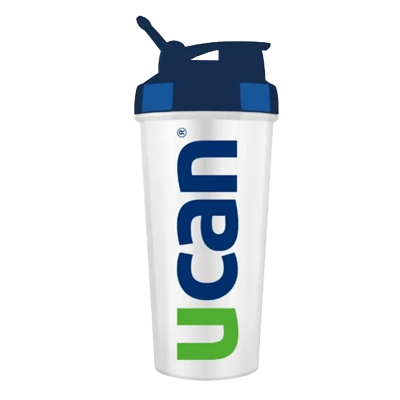
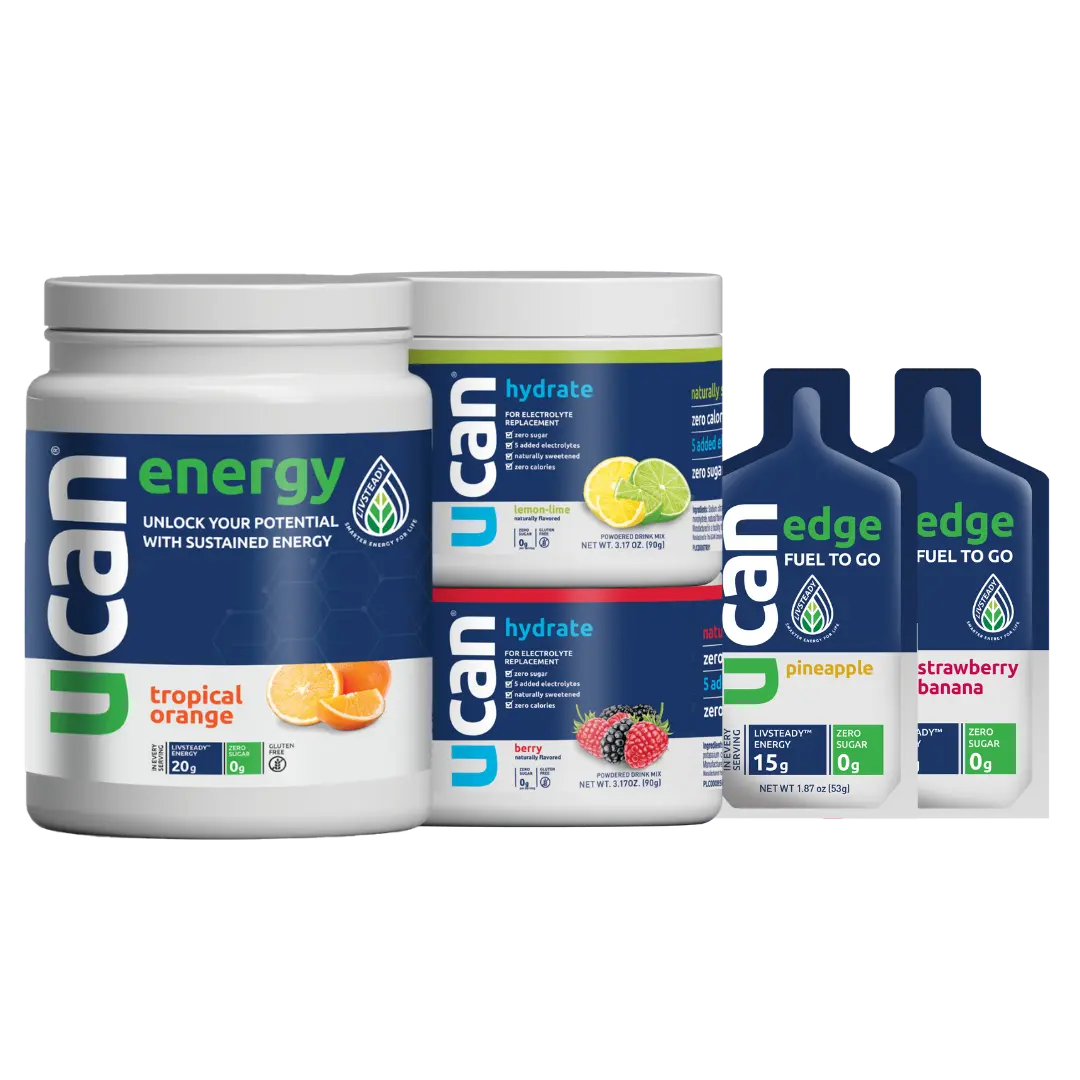
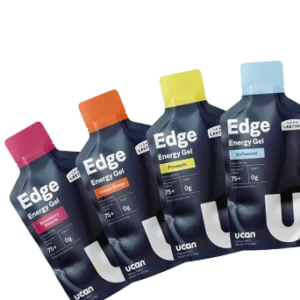
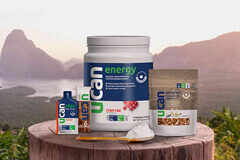


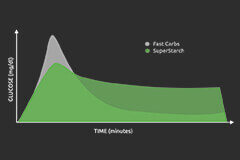

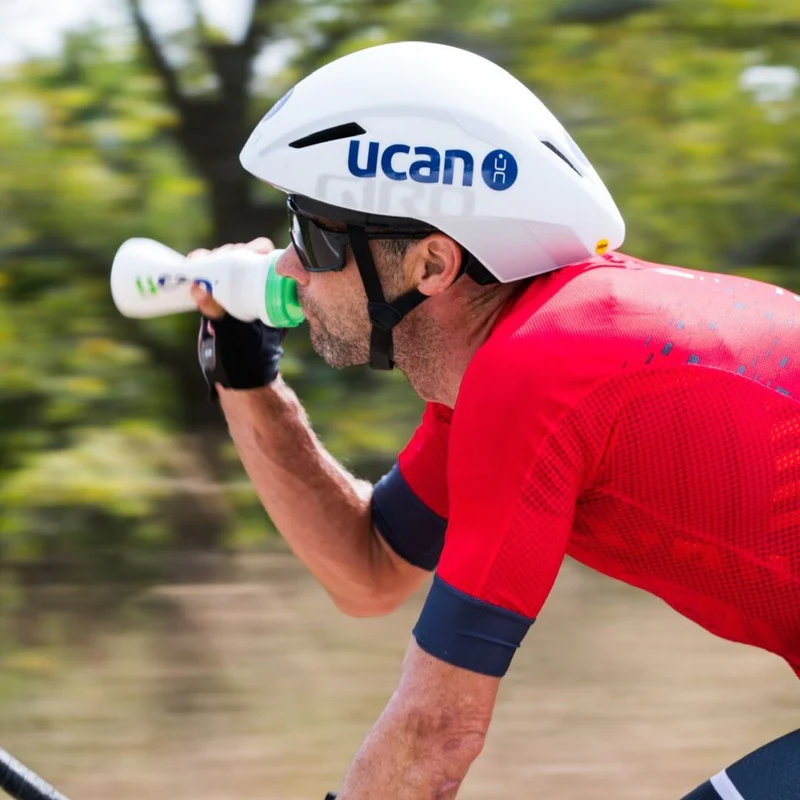








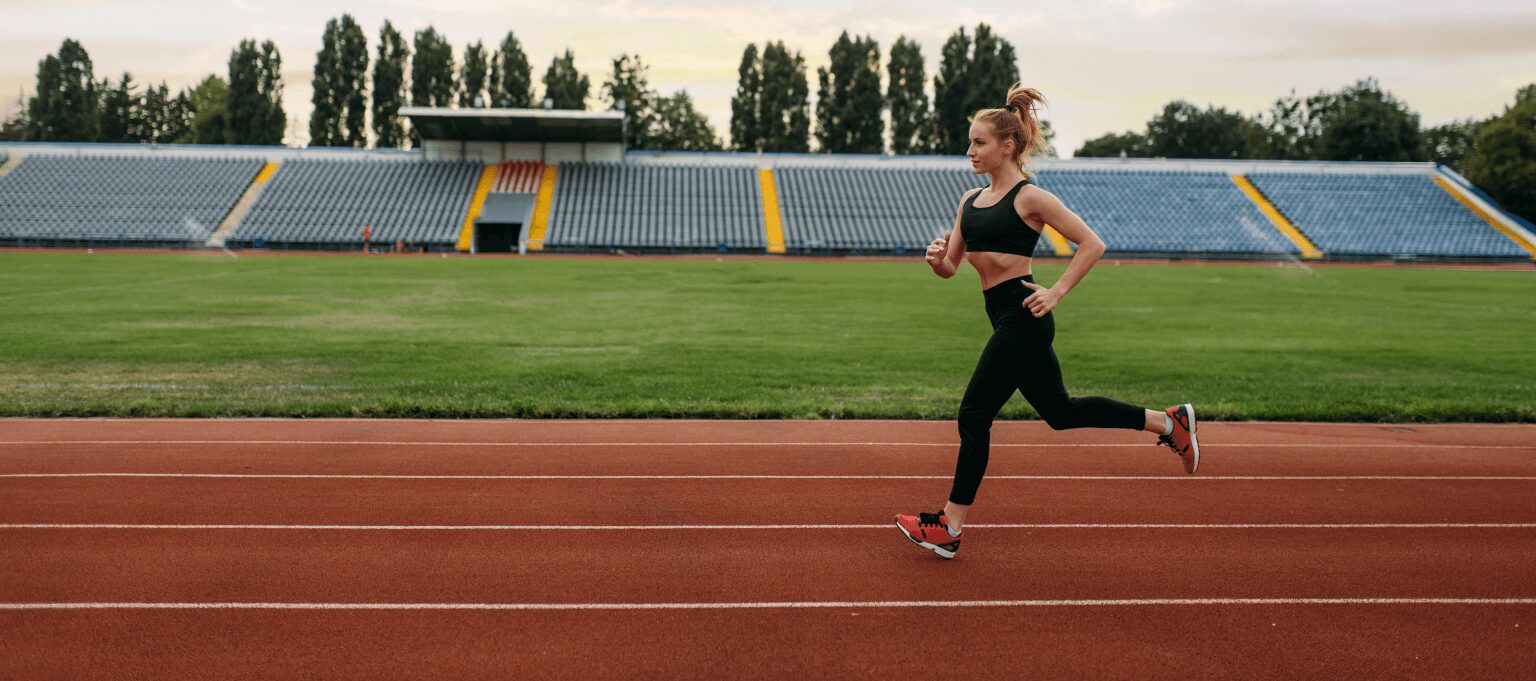









Comments are closed